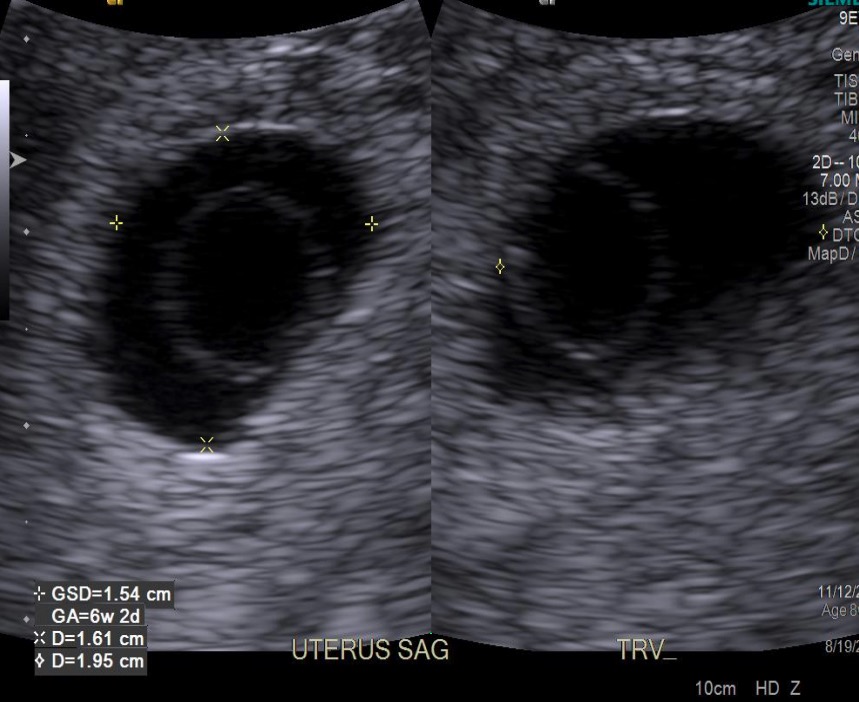Playlist
Show Playlist
Hide Playlist
Pregnancy Physiology: Cardiovascular, Hematologic and Respiratory System
-
Slides PhysiologyofPregnancy Obstetrics.pdf
-
Download Lecture Overview
00:00 So now let's talk about the physiology of pregnancy. 00:05 So here's a case. 00:06 Jenny is a 25-year-old gravida 1 para 0 female at 34 weeks of gestation. She reports increased difficulty in taking deep breaths. 00:16 She denies shortness of breath on exertion and no chest pain. 00:19 Her pregnancy has been uncomplicated and she has no medical problems. 00:23 What is the most likely cause of her difficulty in breathing? And we'll think about this as we go throughout the lecture. 00:30 So when we think about the changes of physiology that happen in pregnancy, there are eight systems that we want to focus on first cardiovascular, next, hematologic, next respiratory, then the gastrointestinal system, then the renal system, metabolic, endocrine and anatomic changes that we see throughout the pregnancy. 00:52 So let's start with the cardiovascular system. 00:55 First there are some anatomical changes that we need to talk about. 00:58 The heart is displaced left and upward and is rotated on its long axis in pregnancy. 01:03 This is important because where you listen for heart sounds is a little different than in the non-pregnant patient. 01:09 So now let's think about the physiologic changes within the cardiovascular system. 01:14 So we notice that the systemic vascular resistance changes. 01:17 So how do you think it changes. 01:19 Does it increase? Does it decrease? Well in fact it decreases. 01:23 And this is the reason in the first and the second trimester we notice that the blood pressure also decreases. 01:29 Well when we think about the mean arterial pressure what do you think happens there. 01:33 Does it increase? Does it decrease? It in fact decreases as well. 01:38 Our heart rate also changes in pregnancy. 01:42 What do you think? Does it increase or does it decrease? The heart rate also increases in pregnancy. 01:48 And lastly cardiac output. 01:51 Do you think it increases or decreases? You probably guessed right. 01:55 It increases. 01:56 In fact, it increases to almost 15 to 40% in the first trimester and even more during the labor process. 02:05 So now let's move to the hematologic system that also changes in pregnancy. 02:09 First we notice that the blood volume increases to 40 to 45% above the non-pregnant patient. This is mostly because of increase in erythrocytes and in plasma. 02:19 And we notice that pregnant women have a physiologic anemia because of this increase. 02:25 So what else changes. 02:26 Well our iron requirements also increase in pregnancy. 02:29 Some of that can be met in the diet. 02:31 But in some pregnant women they require iron supplementation to meet that increased demand. 02:37 Now our immune system also changes in pregnancy. 02:41 While pregnancy does not cause a true generalized immunodeficient state, alterations in the immune system do occur. 02:49 Cytotoxic immunity appears to decrease while the regulatory adaptive immune response is upregulated. 02:56 It is important to note that pregnancy is associated with increased susceptibility or severity of certain infections, such as urinary tract infections, influenza, and toxoplasmosis. Now lastly, but most importantly, in the hematologic system, pregnant women are hypercoagulable. 03:16 That means their blood is thickened, and because of that, they are at increased risk for deep vein thrombosis as well as pulmonary embolism. 03:23 This is important to think about as this can be a huge cause of maternal mortality, especially in light of patients that undergo C-section. 03:31 Surgery, we know increases our risk of DVT and pregnancy because it is a hypercoagulable state also increases that risk. 03:38 So we need to be sure to watch out for that. 03:42 So now moving on to the respiratory system. 03:45 There are some anatomic as well as physiologic changes in that system as well. 03:49 First is the change in the diaphragm. 03:51 We notice that that rises by four centimeters. 03:54 Can you think of why that may be? Well, let me tell you the uterus is increasing during that time. 04:00 As the uterus gets larger the diaphragm gets pushed up as well. 04:04 So how does that affect our physiologic changes within the respiratory system. 04:09 Well the functional residual capacity decreases. 04:12 And again that's just because the diaphragm is pushing up. 04:15 So that residual capacity decreases. 04:17 The total lung volume however does not change. 04:21 Our expiratory residual volume and our residual volume also decrease. 04:26 And then when we think about our tidal volume and our minute ventilation, they both increase. So this is a nice diagram that puts all those things that I just told you into one big location. 04:39 So I would make sure that you go through this in a lot of detail to make sure you understand those changes in the lung volume, as we previously discussed. 04:46 So let's move on to a question. 04:48 During pregnancy, which of the following physiologic changes happen within the pulmonary system? A. Because of compression from the uterus the total lung capacity decreases. 04:59 B. Because of compression from the uterus the inspiratory capacity decreases. 05:04 C. Because of compression from the uterus the residual volume decreases or D. 05:09 None of the above. 05:11 What do you think? Well, the answer is C because of the compression from the uterus and remember that also causes the diaphragm to decrease by four centimeters, the residual volume also decreases.
About the Lecture
The lecture Pregnancy Physiology: Cardiovascular, Hematologic and Respiratory System by Veronica Gillispie, MD, MAS, FACOG is from the course Antenatal Care. It contains the following chapters:
- Physiology of Pregnancy
- Cardiovascular System
- Hematologic System
- Respiratory System
Included Quiz Questions
Which of the following physiologic changes occur in the cardiovascular system during pregnancy?
- Cardiac output increases due to multiple factors, including an increase in heart rate.
- Cardiac output increases due to multiple factors, including an increase in mean arterial pressure.
- Cardiac output increases due to multiple factors, including a decrease in heart rate and an increase in systemic vascular resistance.
- Cardiac output decreases due to multiple factors, including a decrease in blood pressure.
- Cardiac output remains the same due to an increase in heart rate and a decrease in mean arterial pressure.
Which of the following changes occurs in the cardiovascular system during pregnancy?
- The heart is displaced leftward and upward.
- The systemic vascular resistance increases.
- The mean arterial pressure increases.
- The heart rate decreases.
- The cardiac output decreases.
Which of the following hematological changes occur during pregnancy?
- Maternal blood volume increases by 40–45% compared with non-maternal blood volume.
- Maternal iron requirements decrease due to an increase in erythropoiesis.
- The maternal immune system strengthens to protect the fetus from pathogens.
- Maternal plasma volume decreases relative to whole blood volume.
- Maternal hypocoagulable state increases the risk of abnormal bleeding during pregnancy.
A 28-year-old female is post-operative day one after an emergency C-section of her term infant. She had no other complications during pregnancy and has no other past medical problems. Which of the following factors puts her at an increased risk of developing a deep vein thrombosis?
- Increased hypercoagulability during pregnancy and immediate post-partum state and post-operative status
- Increased hypercoagulability due to post-operative status only
- Increased plasma volume during pregnancy
- Increased cardiac output during labor and delivery
- Physiologic anemia
Which of the following changes occur in the maternal respiratory physiology during pregnancy?
- Decreased expiratory residual volume
- Decreased minute ventilation
- Increased total lung capacity
- Increased residual volume
- Decreased tidal volume
Which of the following changes occurs in the pulmonary system during pregnancy?
- The diaphragm rises by 4 cm, decreasing functional residual capacity.
- The diaphragm drops by 4 cm, increasing minute ventilation.
- The diaphragm drops by 4 cm, increasing tidal volume.
- The diaphragm rises by 4 cm, increasing residual volume.
- The diaphragm rises by 4 cm, decreasing total lung capacity.
Customer reviews
5,0 of 5 stars
| 5 Stars |
|
5 |
| 4 Stars |
|
0 |
| 3 Stars |
|
0 |
| 2 Stars |
|
0 |
| 1 Star |
|
0 |
Dr. Gillispie has a great presence and attitude that regardless my very low interest in obstetrics I get hooked to her lessons. I am glad I found her videos because Obstetrics is one of my weak areas.
The presentation was brief and simplified thanks too much and I hope like these lectures in future
very simple to the point and explain many thing was difficult to me
This lecture was engaging, clearly explained and time efficient. It's really easy to memorize key information using this short video. Thank you!





